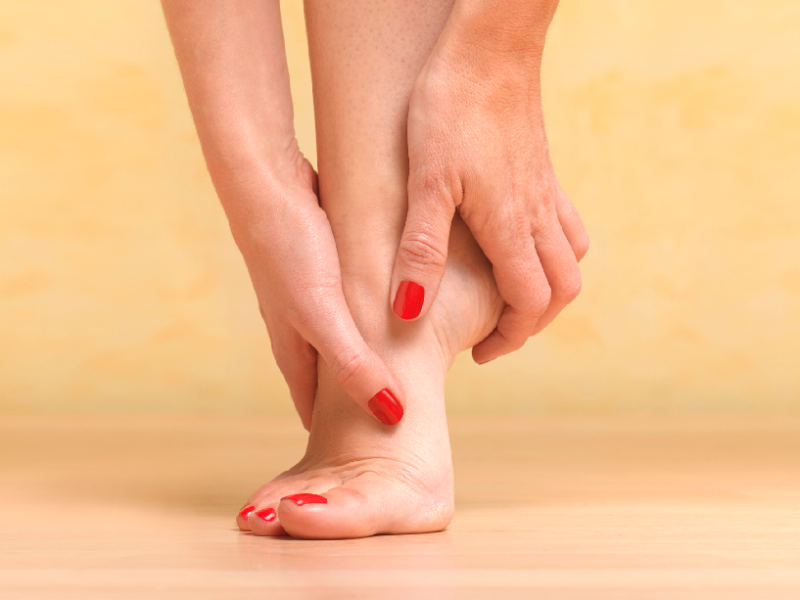The medical term that is used for such pain in the ball of our foot is called metatarsal pain. This term is an umbrella term that is generally used for any kind of symptom that may have several possible reasons.
Those who are suffering from such ball of foot pain may experience a certain aching pain and also inflammation in their padding that is directly below their toes, where people generally put most of the pressure while standing and moving.
Usually, such aching can be present in our metatarsal heads, which are located just under our toes. The patient may also experience numbness, shooting pain, and also immediate pain while flexing the toes. When you will be off your feet, the aching will ease and again return when you want to resume your activities.
This kind of pain is quite common and, in most cases, podiatrist Irvine can treat them, particularly when the actual cause is fully known.
Metatarsalgia the medical term used for this pain is located often under the second, third, and fourth metatarsal heads. Sometimes it is more isolated at your first metatarsal head. Usually, metatarsalgia can respond very quickly to any proper treatment. Irvine podiatrist can always treat and rarely surgery will be needed.
What are the various symptoms?
This kind of ball of foot pain may occur just below the toes.
You may feel like:
- Burning and aching pain
- Numbness/tingling in the toes
- Shooting pain
- Having a certain small pebble in the shoe
- Immediate pain that may get worse as you walk, run, exercise, or flex your foot
Your ball of foot pain can also occur with:
- Bruising on the foot
- Inflammation or swelling
Reasonsfor pain in your balls of the foot
A person’s ball of foot discomfort can be caused by a variety of things, so it’s crucial to figure out what’s causing it before getting therapy.
The soreness in your balls of the feet can be caused by a variety of factors:
- Very intense physical activity
- Having a very high arch
- The second toe is longer compared to the big toe
- Stress fractures/inflammation
- Wearing high heels
- Wearing too-small shoes
- Hammertoe, calluses, or bunions
- Having overweight
- Metatarsal joint pain
- Arthritis
There are also other conditions that might cause pain in the ball of your foot. Morton’s neuroma affects the area between the 3rd and 4th toes. Swelling of the tissues all-around your nerves leading to your toes causes this.
Freiberg’s illness is another possibility. A blood supply shortage to the 2nd, 3rd, or 4th metatarsal causes this disorder. Part of the metatarsal head may lose structural integrity in this disorder, resulting in the collapse of the 2nd metatarsal head and adjoining joint.
Sesamoiditis can also produce pain in the ball of your foot. Sesamoiditis is an inflammatory condition affecting the sesamoid bones, whichcan be pulley-like bones attached to tendons rather than other bones. People who are physically active, such as runners or ballet dancers, are more likely to develop this illness.
Diagnosing the ball of your foot pain
If your pain is light/moderate and no swelling/bruising is present, it may be wise to wait for a few days before seeing a doctor if the symptoms go away on their own.
If you have any of these symptoms, you should contact an Orange County podiatrist
- Severe foot pain
- Swelling and discoloration
- Within 2 weeks no pain relief
- You are diabetic
Based on your case, your doctor may take several actions for diagnosing the condition like:
- Physically examining the affected foot
- Ask questions related to your lifestyle and physical activities recently done
If any break or injury is suspected then the Podiatrist may ask for medical imaging, e.g.,an X-ray, MRI, or ultrasound report.
How it is treated?
There are numerous home cures for pain in your ball of the foot. In casethe symptoms are not caused by a more serious ailment like diabetes or Freiberg’s disease, your doctor may likely prescribe any of the following treatments.
- When you have the opportunity, rest your foot, especially after exertion. Every 2 – 3 hours, apply an ice pack at least for 20 minutes. Ice may aid in reducing of edema and inflammation.
- Wear comfortable shoes.
- Exercise. If you don’t want to run or engage in certain high-impact activities during this time, focused stretches may help to relieve pain and improve flexibility and strength.
- Use orthotic inserts. Your doctor may prescribe certain orthotic inserts or may suggest commercial shoe inserts, depending on the severity of your condition. The purpose of orthotic inserts is to assist correct the foot and giving additional cushioning. A certain pad under your ball of the foot may also help to relieve pain.
- Manage your weight. Extra weight can place additional strain on the balls of your feet, and losing weight might help alleviate this. A doctor can advise you on how to lose weight as peryour lifestyle or any other health issues you may have.
- Take medication for pain relief. Nonsteroidal anti-inflammatory medicines (NSAIDs) or another sort of pain treatment may be recommended by your doctor. If you have a significant ball of foot discomfort, your doctor may suggest injectable steroids that you may receive at your next medical appointment.







